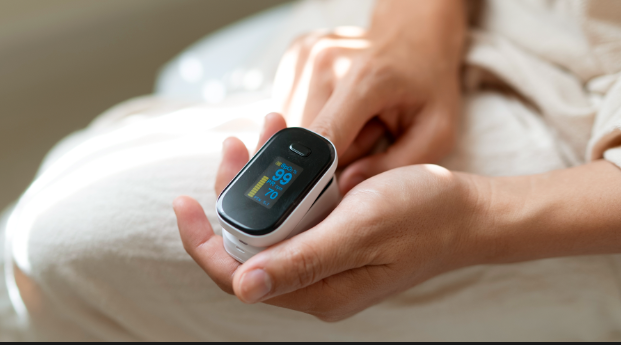On Friday, a panel of advisors to the U.S. Food and Drug Administration discussed a persistent problem with pulse oximeters: people with darker complexions tend to receive fewer accurate readings.
Accurate readings are crucial because the gadgets are meant to assess blood oxygen levels, according to specialists. The FDA’s Anesthesiology and Respiratory Therapy Devices Panel discussed strategies to improve the assessment of pulse oximeter accuracy in patients with darker skin throughout the course of an all-day meeting. Panelist Dr. Jeffrey Feldman stated that, despite the fact that more work needs to be done to improve the accuracy of pulse oximeters, these devices’ advantages currently exceed their drawbacks.
“This technology has and continues to save lives on a daily basis in this country. It needs to be improved. We need to look at health disparities, and we need to do better,” he said after the meeting, CNN reported. “But we also need to recognize how valuable this technology is for patients every day, at home and in the hospital.” Precisely because the general public can use these devices at home to check their oxygen levels, the panel honed in on how to ensure the accuracy of pulse oximeters for all skin tones before they reach drugstore shelves. So, the panel focused on the structure of company trials testing the products.
Also read-Zepbound Weight-Loss Medicine Lowers Hypertension In Obese Individuals

Pulse Oximeter
The FDA recommended that manufacturers of pulse oximeters include “a range of skin pigmentation” in their clinical research, including at least two “darkly pigmented subjects or 15% of the study group,” whichever is bigger. The FDA released these guidelines for manufacturers back in 2013. The FDA is currently considering updates to these research trials that would involve a wider range of participants—at least 24—who represent every shade of skin tone on the 10-shade Monk Skin Tone scale. “It is imperative that any new requirements they issue include a greater degree of diversity,” Feldman stated.

The only prerequisite in 2013 was for up to two patients of color. “I think that has proven to be inadequate to predict real-world performance,” he continued. “The prior requirements were small numbers and really not very diverse.” Numerous panelists concurred that a mere 24 participants with varying skin tones might not constitute an adequate sample size. CNN stated that member Dr. Thomas Wiswell, a neonatologist from Hawaii, remarked during the conference, “Twenty-four patients just seems low to me.” “I’m still not sure what that power will look like with 24.” As a biostatistician in Texas and a panel member, Dr. Ben Saville stated, “My suspicion is that it’s probably not enough. Edward McClure, who was diagnosed in 2013 with emphysema, said he relies on pulse oximeter devices to check his blood oxygen levels because he has been prescribed oxygen therapy. But his readings have not always been accurate, possibly due to his skin color.

“Sometimes, when I get a reading, the pulse rate might say 27, and the OT rating might say 90 — and then I know that is not correct, because I know my pulse was not 27,” McClure, who works with the nonprofit Right2Breathe, told the panel. “Then I’ll do it again, and it might be closer to what I feel is right, but sometimes I have to do it up to three times where I’m convinced that this is the right reading,” he added. “These pulse oximeters don’t always read accurately for people who have melanated skin or heavily melanated skin like myself.”

Also read-The Global Shark Bites Rate Is Rising
images source: Google
Disclaimer: The opinions and suggestions expressed in this article are solely those of the individual analysts. These are not the opinions of HNN. For more, please consult with your doctor




































